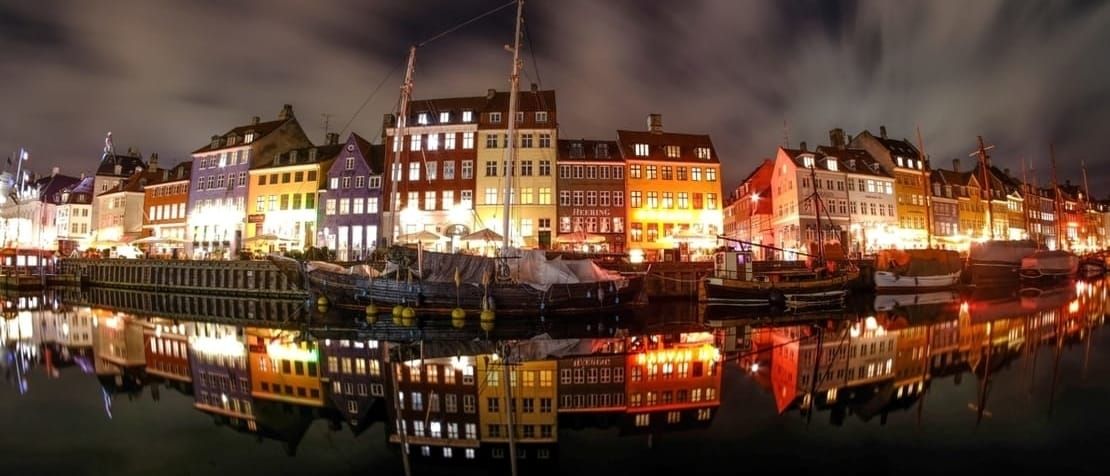
Balancing infrastructure sharing – The Danish experience
Denmark enacted the Danish act on the erection and shared use of telecom towers in 1999. The main goal of the act was to protect the environment against the visual and physical impact of masts and towers.
When the public database on antennas was established in 2004 the focus was to provide the public with information about the location of mobile antennas in view of rising public concerns over health risks from electromagnetic radiation.
Both turned out to be key elements in the shared use of infrastructure for mobile operators. They proved to be useful tools to gain quick access to existing sites as well as cost saving at a time when mobile networks expanded at a high pace to become denser and provide better coverage and more capacity. Especially with the introduction in 2010 of 4G on the Danish market where the demand for data began to grow with an annual increase of 60 % (see figure below).

The first choice for the operators and for public authorities in Denmark have been to reuse existing infrastructure rather than duplicating infrastructure. The telecoms operators have for their part on a voluntary basis agreed on both guidelines and standard contracts for the sharing of costs and facilities. This has required a minimum of involvement from the authorities.
Over the years the local authorities responsible for granting construction permits have engaged in a close dialogue with the operators in order to find the most suited locations for new masts and towers. The aim is on the one hand to address the need for better coverage and on the other hand to minimize the environmental impact.
Strict Danish rules governing access to the rural open landscape and the preservation of the open coastal line are, however, still among the main challenges for the operators in providing full coverage. This is true even though the societal need for a nationwide digital infrastructure is well acknowledged. Since the entry into force of the act in 1999, it has only once been necessary for the public authority to enforce expropriation of property in order to ensure mobile coverage in an area.
In 2012 the Danish Competition Authority granted permission for the radio access network (RAN) sharing agreement (Radio access network) between the Danish subsidiaries of Telia and Telenor. The conditions were among others that they should make redundant towers and sites available to other market players. This network sharing agreement between Telia and Telenor has led to a substantial cost saving and a common network with a better coverage and capacity than the two previously independent networks.
RELATED: Independent towercos inaugurate an era of infrastructure sharing
At the core of both the European and the Danish regulation of the telecommunication sector is the aim to ensure competition both at the infrastructure and the service level. This includes a dilemma that can be phrased as a rhetoric question: what is the rationale behind having several parallel highways instead of one common, cost effective one?
Or why have several competing mobile networks instead of one common? The answer is simple. Without infrastructure competition there will be no efficient competition. Capacity, speed and coverage are competitive parameters that influence the choice of the consumers and give the operators a clear incentive to invest in their networks.
Efficient competition requires both choice between network operators and a surplus of infrastructure on the demand side. Infrastructure sharing reduces costs but might also reduce consumer choice.
So far the experience in Denmark has been increased coverage, prices have been reduced, and competition does not seem to have been affected in a negative way by infrastructure sharing.

In the area of sharing underground infrastructure, the Danish experience is less clear. Co-digging and coordination of cable works is well accepted in the sector. The local authorities and operators are to a large extent eager to share the cost of deploying new cable infrastructure. When it comes to sharing existing infrastructure, like tubes and ducts, the incentives seem to be lacking. It appears that the operators prefers to have full control over their cables and are reluctant to lay cable in other operators underground passive infrastructure such as ducts and tubes. This is a surprise from the regulators point of view. The general rule implies that 80 % of the cost of deploying fibre optic cable is connected to the cost of digging in the urban areas and 50 % in the rural areas.
In 2016 a legal obligation to provide access to existing passive infrastructure entered into force. So far the effects on the market players have been absent. No request for access has so far handed in complaints to the Danish Energy Agency. This indicates that the rules have had little, if any effect, so far.

Infrastructure sharing can reduce infrastructure costs to the benefit of both operators and customers. So far the Danish experience has been that both coverage has been increased, prices continued to fall, and investments in new infrastructure have been unaffected. There is no indication that competition has been suffering. In order to continue efficient competition, the infrastructure competition is the key.
A corner stone in the Danish regulatory approach is to ensure sufficient choice between network operators and a surplus of capacity to choose from. With the expected future investments in 5G and the massive deployment of antennas and small cells the issues get new importance. This opens up the question of what is acceptable degree of network and infrastructure sharing? The potential cost savings can on the one hand speed up deployment and give Denmark a competitive advantage. On the other hand, in the longer perspective, it may hamper the sustainable competition between network operators.

Morten Bæk, Director General, Danish Energy Agency
